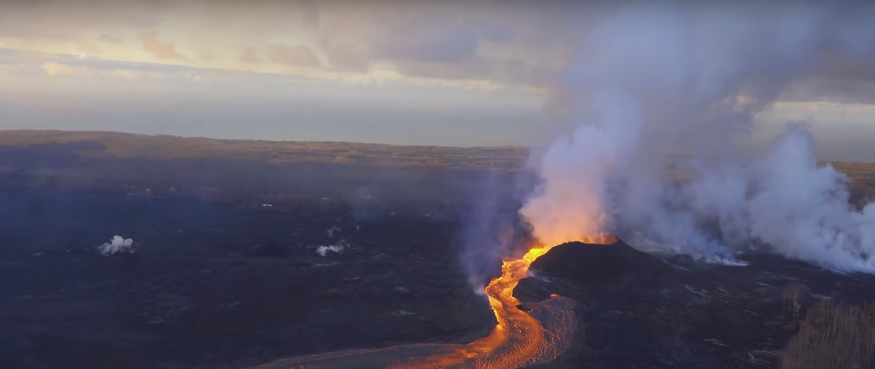
In 2018, the state of Hawaii was shaken (literally and figuratively) by the eruption of Mt. Kilauea resulting in the Kilauea caldera collapse. The explosion created a hole more or less 386.5 meters deep or the same length of the One World Trade Center in New York. What is more surprising is that all these drastic changes are caused by one tiny leak of magma from a reservoir just below the peak.
HOW DID THE KILAUEA CALDERA COLLAPSE?
According to the geologists who monitored the Kilauea caldera collapse, these explosive collapses are a common phenomenon. However, the researchers were also able to observe and hypothesize that events like the Kilauea caldera collapse, which happened relatively slower than the common phenomenon, could be happening to volcanoes all over the planet. In an article written by Scientific American, geophysicist Magnus Tumi Gudmundsson who studies a similar collapse to Kilauea caldera collapse in Bardarbunga, explains, "what we have learned from the two events is that there may not be much warning." Gudmundsson was not a part of the three new studies about the Kilauea, but his experience with the Bardarbunga proves the theory of the researchers. He also explains that collapses such as the Kilauea caldera collapse are similar to the usual volcanic eruption. However, when the magma chamber underneath the volcano can split apart, and magma can now flow freely, the caldera may collapse.
Mt. Kilauea has been actively erupting for as long as 2,800 years ago but was first documented in 1823 when Westerners colonized the island. One of the biggest impacts Kilauea's long history of volcanic eruption happened during its start in 1983 when it began spewing lava out from its Eastern Rift Zone, an area already fractured by fissures.
To say that the series of eruptions ended with a bang in 2018 is an understatement. Upon the culmination of the eruptions in 2018, the lava lake inside the caldera began to drain, and the lower part of the Eastern Rift Zone suddenly became active, spewing out lava and producing new fissures which, unfortunately, flowed towards habited lands where it destroyed 700 homes and other buildings.
Scientists observed the whole Kilauea caldera collapse through drones, GPS sensors, thermal cameras, and satellite-based radar, and they are quite surprised by the findings. It's definitely something that they had not seen before.
KILAUEA CALDERA COLLAPSE BEFORE AND AFTER
In a study published by Kyle Anderson, a geophysicist at the United States Geological Survey, and his team described how the eruption caused the Kilauea caldera collapse and not the other way around, ending a chicken-or-egg argument on the origin of caldera collapses. The team found out that the same thing happened with Bardarbunga and that the primary reason for the Kilauea caldera collapse is the rifting of the islands because gravity pulls the slope of the volcano towards the sea. This gravitational pull resulted in the opening up of fissures which made magma to leave the reservoir and the lava lake inside the crater. According to the study, when the magma below the caldera disappeared, the rock on its floor crumbled down, and while the caldera floor buckled, it pressurized the underground pathways of magma -- this is the cause of the prolonged eruption in the Eastern Rift Zone.
Anderson explains that before the first Kilauea caldera collapse, only a tiny fraction of the magma was removed, certainly less than 3.5 - 4 percent. Prior to this study, there was no accurate estimation of how much magma drainage is needed to cause a caldera collapse. Through their observations, the team found out that it does not take a lot of magma drainage to cause such collapse as seen with Kilauea caldera collapse. Anderson also explained that another factor that may have contributed to the Kilauea caldera collapse is that the caldera is already weak.










